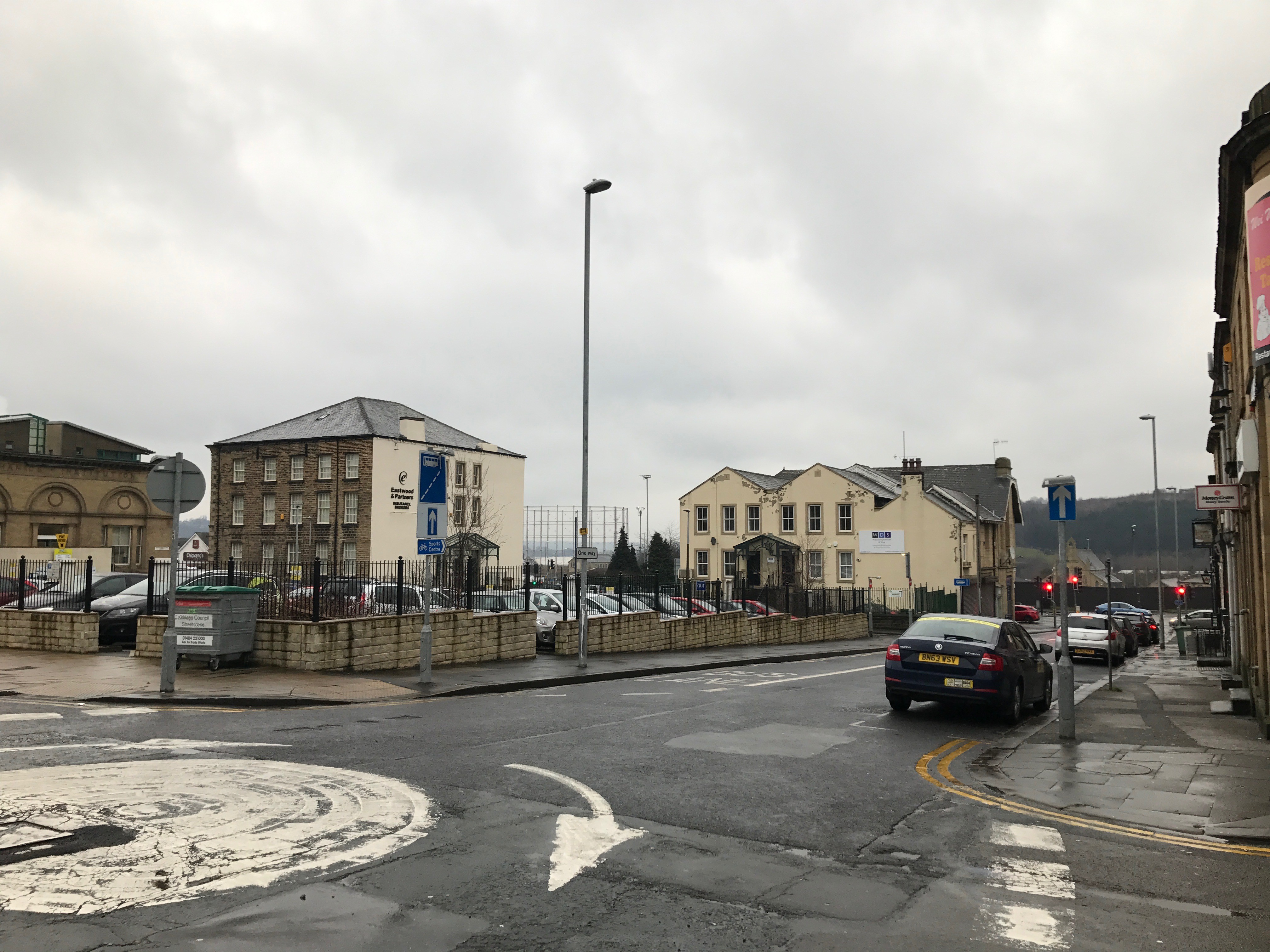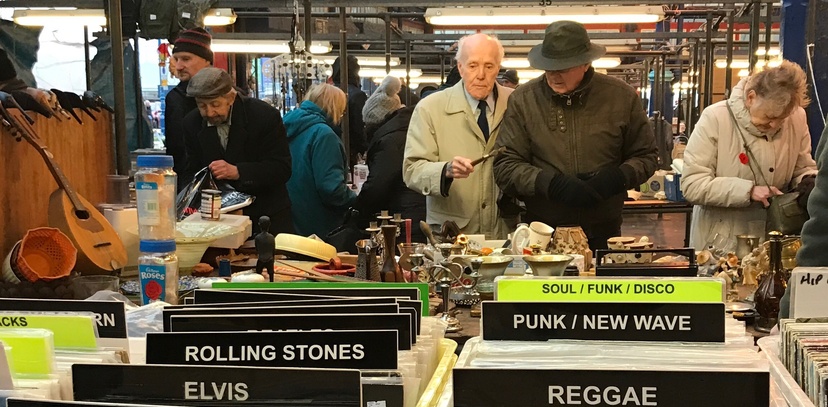
Recent political and economic events have left us all uncertain about the future. New processes and methods are needed in order to bring more voices into decisions affecting communities and strengthen democracy.
In February, Social Life’s David and Emma took part in "NotinWestminster" in Huddersfield, using innovation to improve local democracy. The two day event included workshops, quick-fire talks, conversations and design thinking, to come up with practical ideas to improve democracy that all of us can try out in our neighbourhoods, towns, cities and networks.
Our role in this, alongside a series of fascinating events and talks, was to facilitate a walk (“a psycho-geographic exploration” if you will) of the area around the event location - the Media Centre - in Huddersfield town centre. This was our first test of this method which we will use again in the summer in the area around our office in south London.
So what were we attempting to do through this walk? First, in keeping with the aims of NotinWestminster, we wanted to explore local democracy in relation to decisions about the built environment. Secondly, we wanted to test a new methodology that measures emotional responses to the built environment. We are developing this methodology in partnership with Urban Realities Laboratory for a project called “The Feeling of a Place”. The walk in Huddersfield was our first test of this methodology and what we learned will inform more walks which we are planning around Elephant and Castle in Spring and Summer 2017.
What was our approach to this walk? We walked through Huddersfield town centre and took in three stops – the indoor market, St George’s Square and the intersection between Lord Street and St Peter’s Street, with the church yard on one side and carpark on the other. At each stop we asked the participants a series of questions to capture information on how they felt about each place.
We were by no means experts about the area we are walking through. To help us we had with us Phil Wood, a Huddersfield-based urbanist or ‘urban therapist’ as he prefers it. As author of "The Intercultural City" and organiser of the World Congress Of Psychogeography, as well as an expert on all things Huddersfield, he was well-placed to fill us in with local knowledge and insights along our walk.
We reconvened at the Media Centre to discuss the walk, our walkers' perceptions of each location and what they thought about our methods for collecting information about their emotional responses to places.
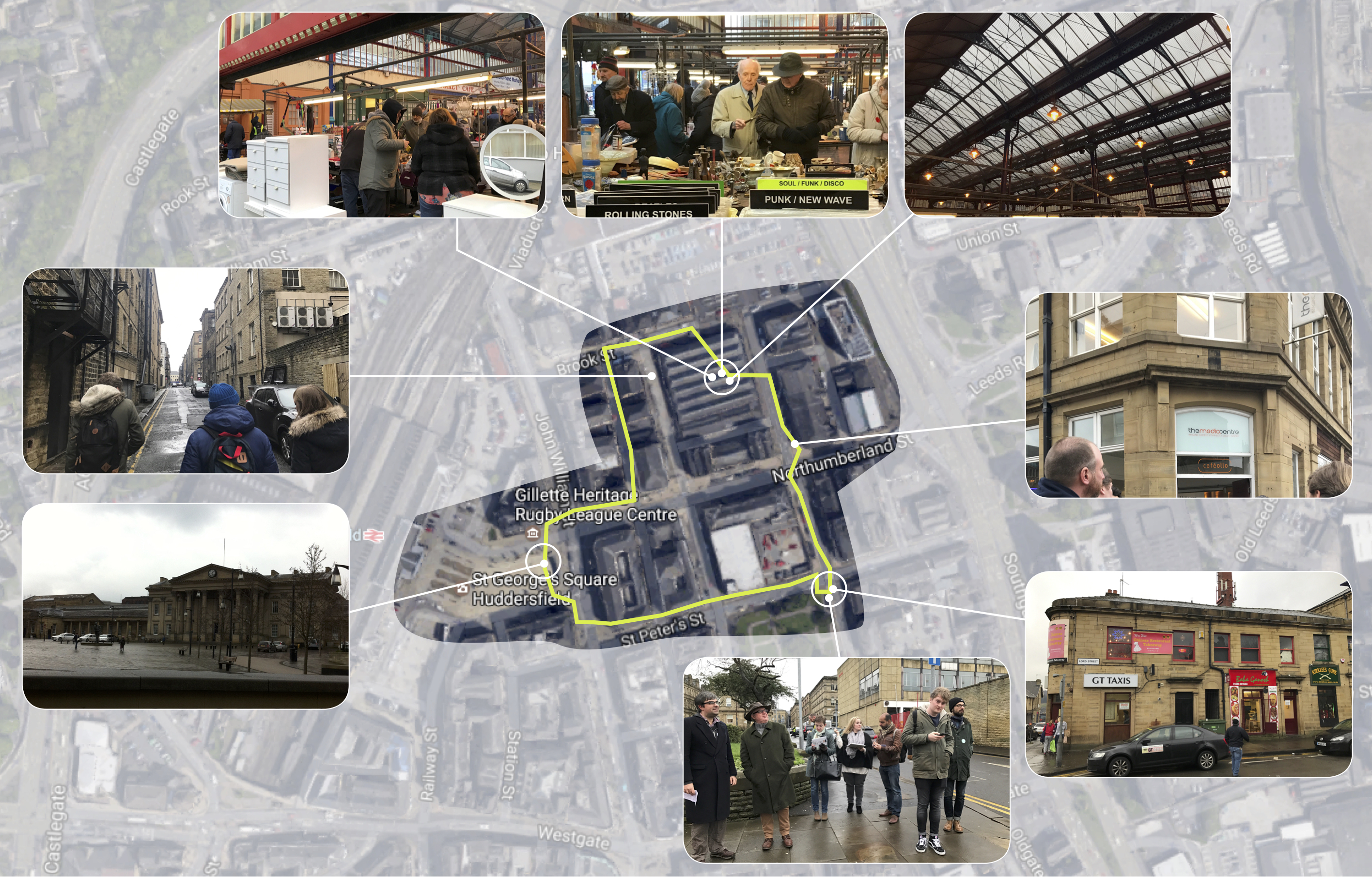
So what did we find? One of the things we want to explore is how our connection to an area impacts on our perception of it. Our walk revealed a difference in perception between those who knew the locations prior to the walk compared to those who visited the sites for the first time. This was especially evident at the third location, which had a negative reputation among people who knew the town centre.
Another interesting finding was that at the two first stops, the indoor market and station square, people felt less stressed, happier and safer compared to the third location. People’s sense of happiness or level of stress didn’t seem to be connected with the complexity of the locations, people found the market complex and the station square simple to understand.The two places were however clearly defined places with a straightforward purpose, compared to our final stop, which was more of a non-place, situated in between locations.
What became apparent as well was what happens when people start focusing on your emotions in relation to your surroundings. We found that the walks created a hyperawareness of the places we visited. To capture some of these details we asked the participants to photograph details, which described their mood and the location. One of our fellow walkers commented that walking around observing a place full of people made him feel a separate from his surroundings. Another participant told us the walk made her realise details about her city that she didn’t notice in her everyday routine, and it made her look at things in a new way.
Phil Wood told us about the black patches on a building, where the burglar alarm once was, and told us that most of Huddersfield town centre buildings used to be this same black colour rather than the proud sandstone that now distinguishes the town centre. The Council hadsandblasted the buildings in the early 1980s to remove black soot, which had come from the (now closed) textile mills. Phil remarked “imagine how those black buildings would’ve affected the mood in the town”.
Memories from the walk
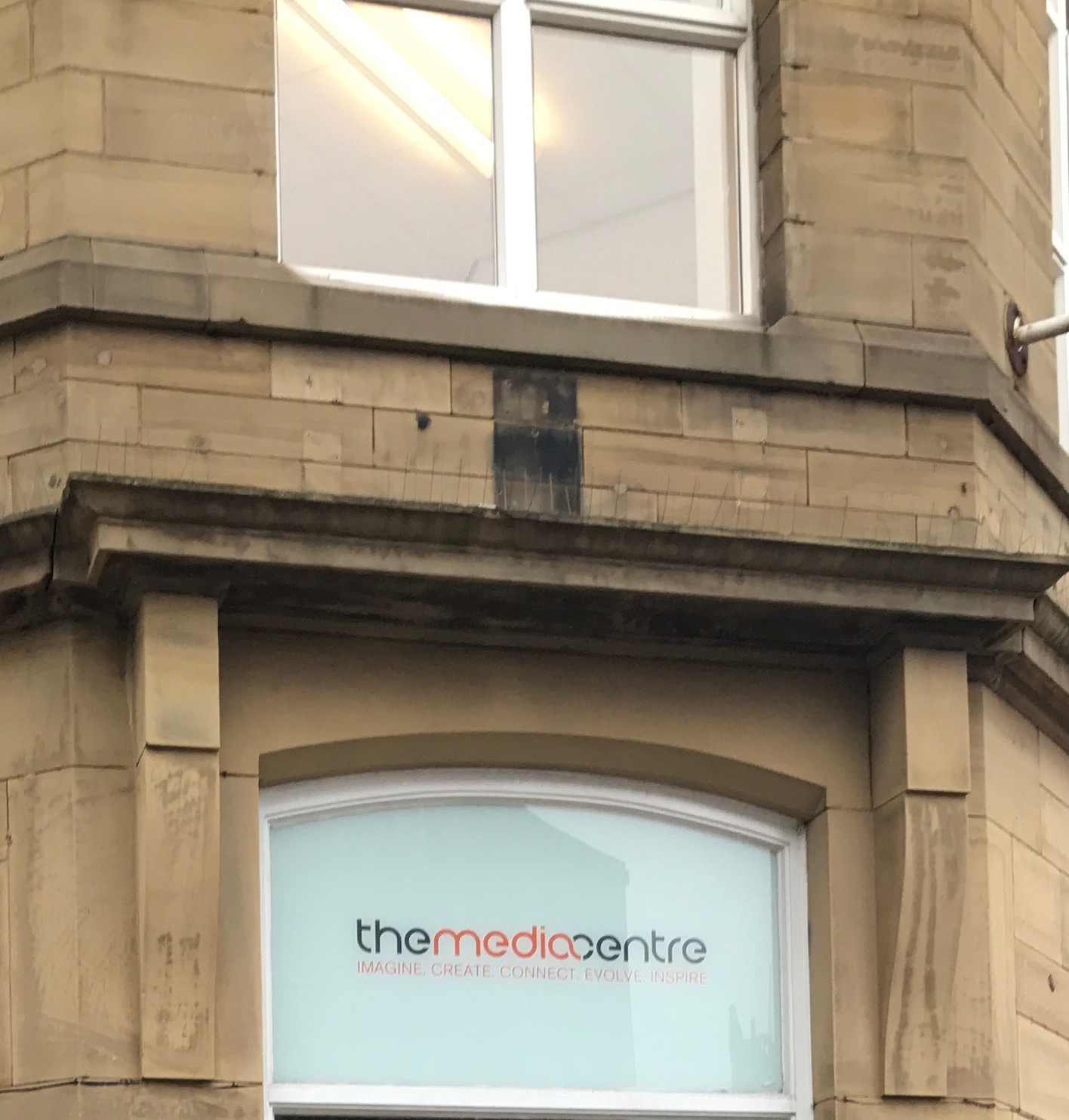
The black spot above the entrance to the media centre.
Stop 1: Huddersfield open market
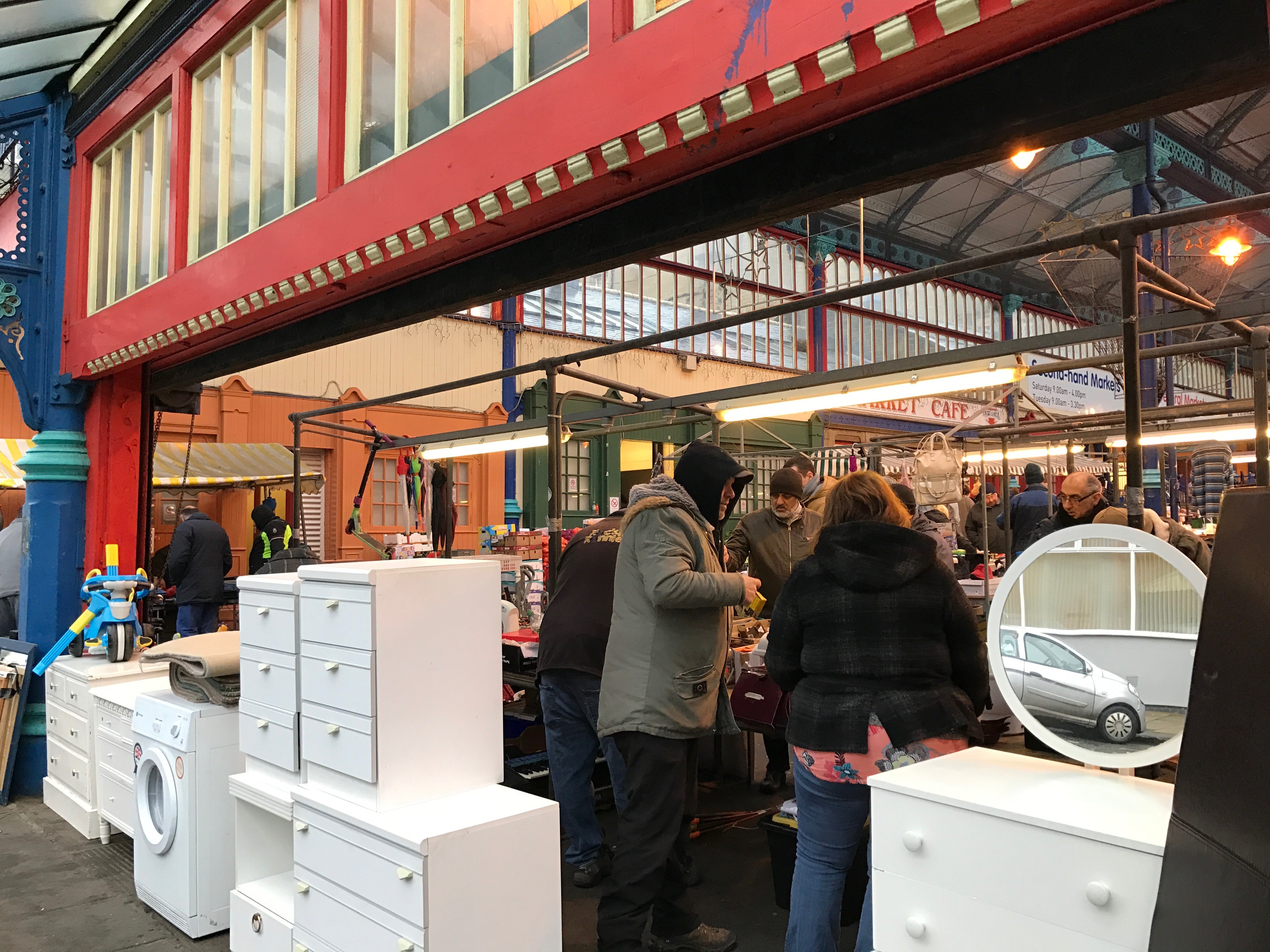
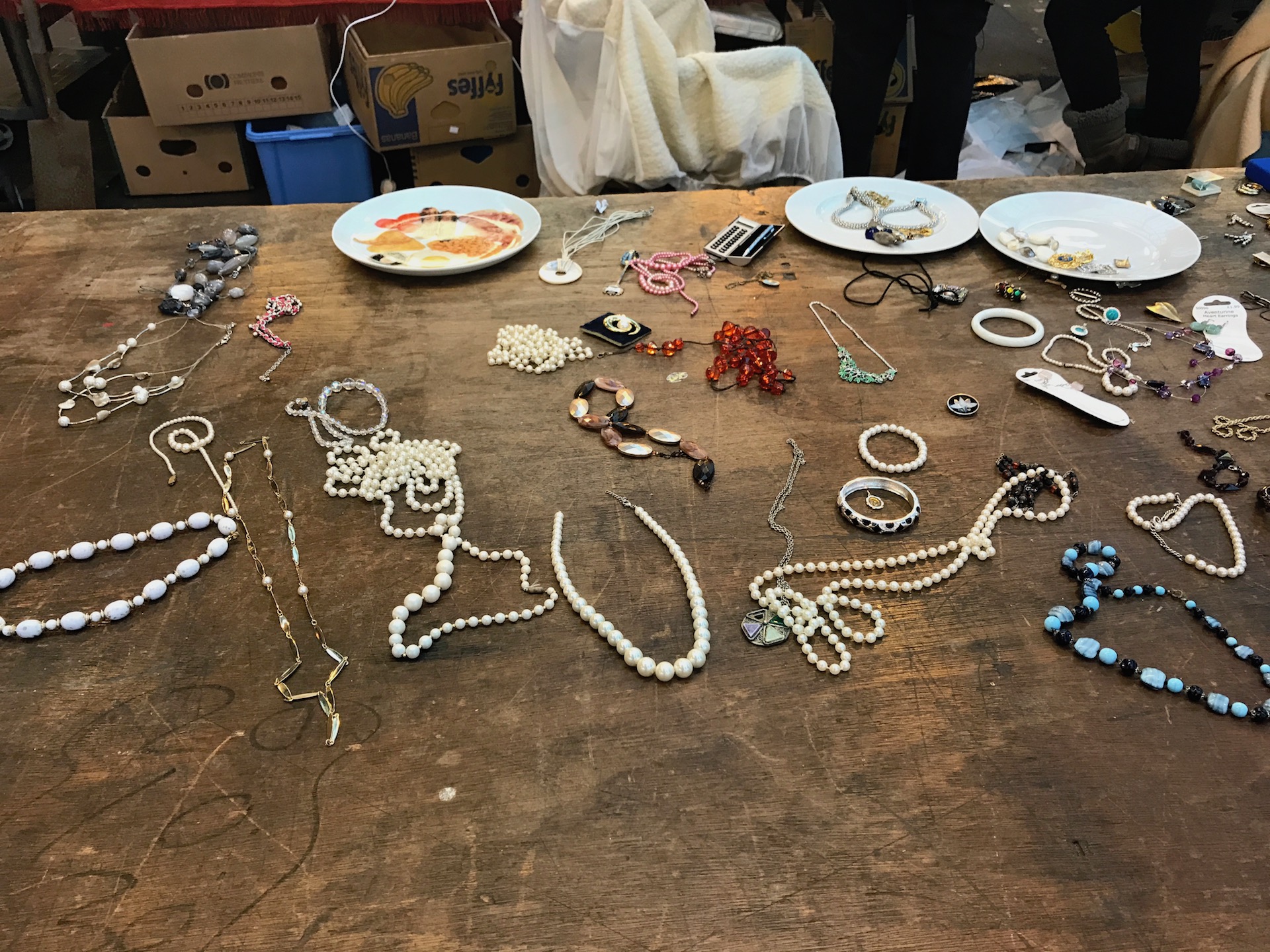
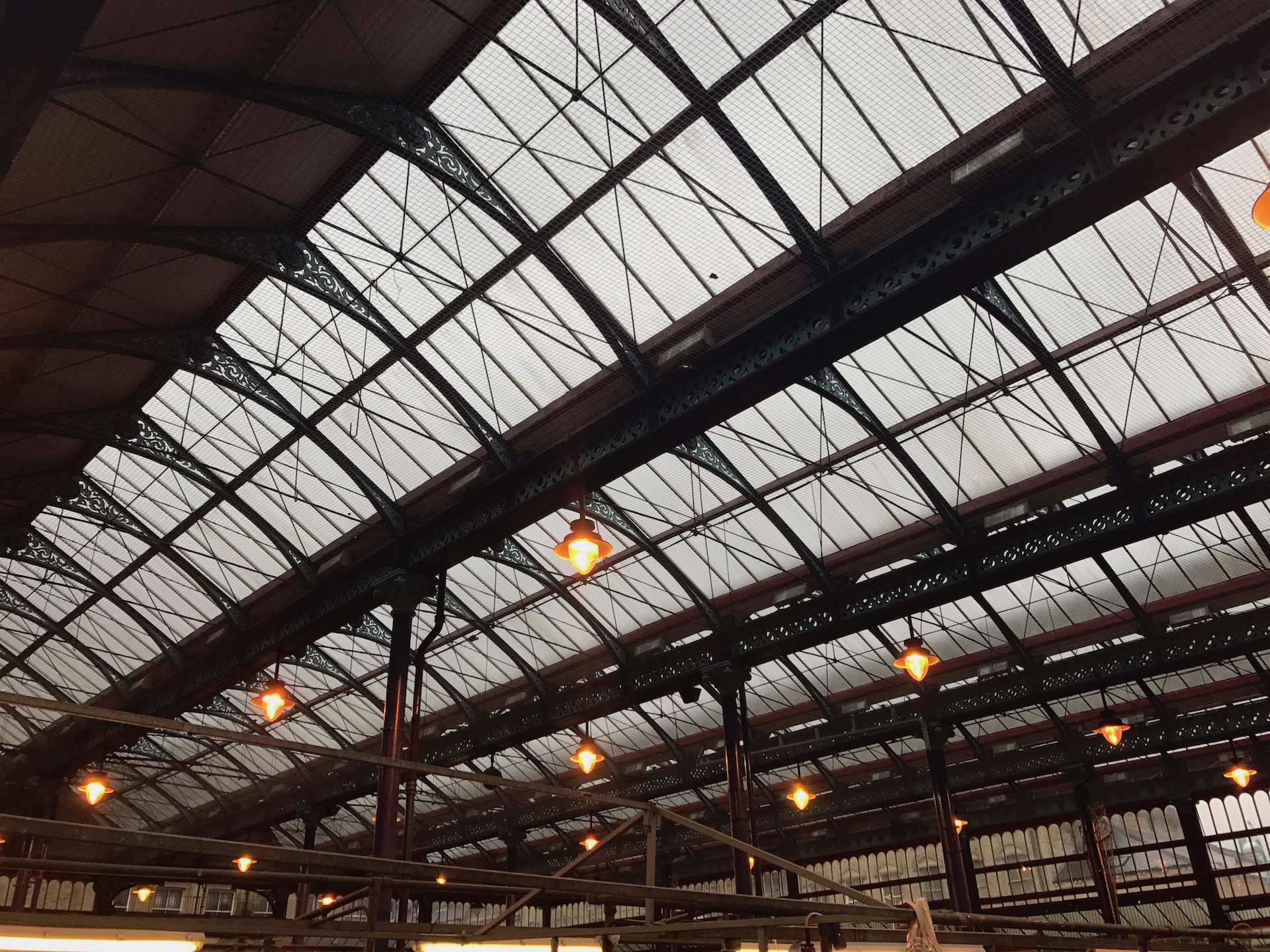
Stop 2: St George’s Square, the first public square in Huddersfield
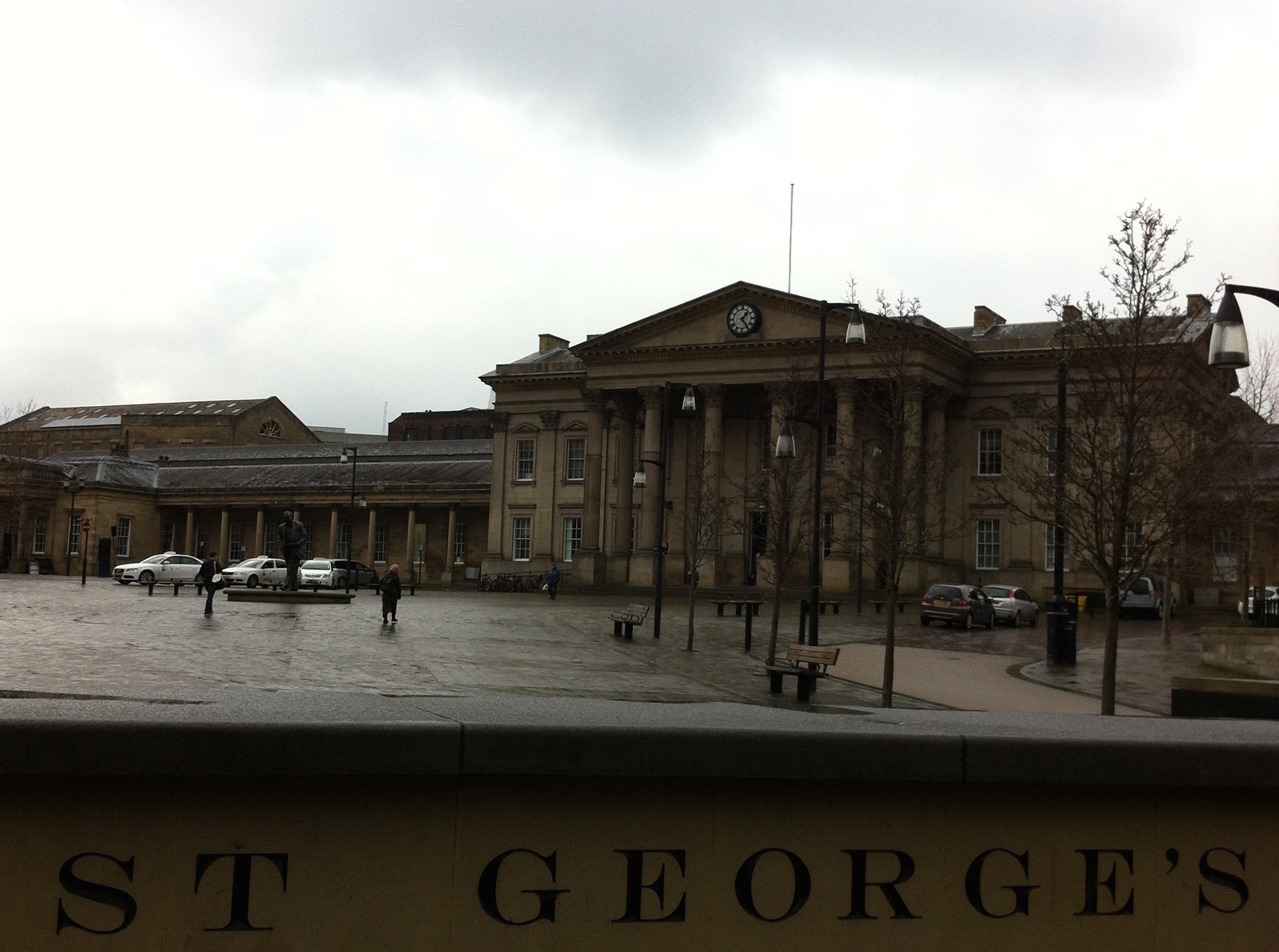
Stop 3: the intersection between Lord St and St Peter’s St, with the church yard on one side and carpark on the other.
